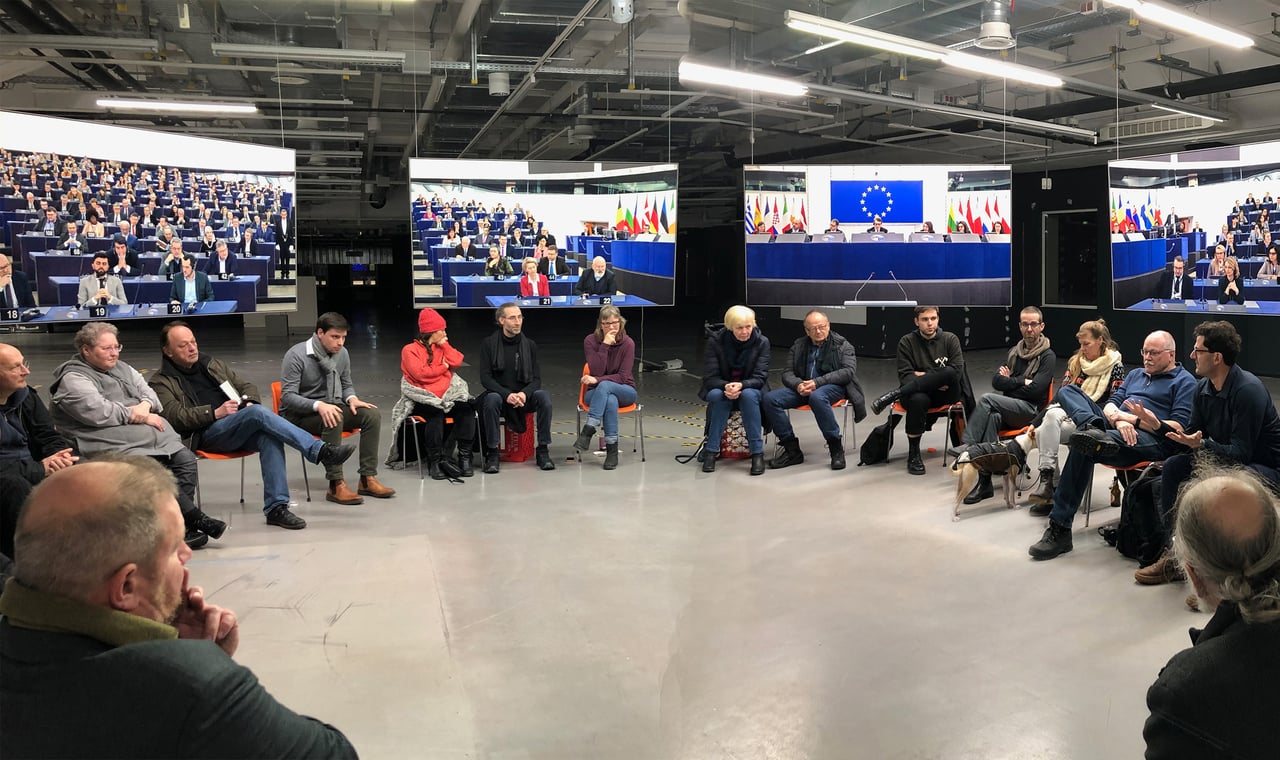Magazine
Martina Geiger-Gerlach — Eyes wide shut, trying to photograph the European Dream
A public opinion poll earlier this year suggests the vast majority of European citizens look to the EU to protect them against global challenges and security risks. The demands are immense. Several million refugees fled to the European Union after Russia's invasion of Ukraine in early 2023.
The US, under the increasingly autocratic leadership of Donald Trump, is threatening to annex Greenland, as he trashes a decades-old transatlantic alliance and launches a global trade war. Climate change, inflation, economic hardships, ageing populations and migration are among some of the other larger issues that Europeans are also facing.
Yet almost three-quarters of people believe that EU membership is a massive benefit to their home countries. It is the best result ever recorded by Eurobarometer since this question was first asked in 1983.
"I kept hearing about this dream of Europe. But what could it be? Nobody knows"
The survey comes at a time of uncertainty, with Europeans looking at what it means to be a part of the European Union, a project rooted in the ashes of World War II, in the hopes of preventing future conflicts while promoting economic cooperation. Utopian principles spanning human dignity, freedom, democracy, equality, rule of law, and respect for human rights shape its governing constitution.
Some speculated the project would collapse like a domino after the United Kingdom left the bloc in 2016. But calls by some mostly far-right politicians in France, Germany and Italy to also leave the EU faded into the background as the UK grappled with the realities of being alone on the world stage.
It is in these moments that the concept of the European dream appears to take shape, where a fractured unity among the remaining 27 member states becomes more relevant as people look for a sense of community and peaceful co-existence.
These are questions that German artist Martina Geiger-Gerlach has been exploring through an extraordinary digital photomontage of European Parliament plenary sessions in Strasbourg.
"I kept hearing about this dream of Europe. But what could it be? Nobody knows," she says, in an interview with EUobserver. "Does this mean that a parliament needs to dream from time to time?" she says.

Geiger-Gerlach spent two-and-a-half years on the project and visited the Strasbourg plenary sessions over five months, every session from morning to evening, from October 2019 to February 2020.
The end result is a series of eight large panels of some 818 politicians, leaders and officials affiliated with the EU institutions — all with their eyes shut. Among them are younger versions of familiar faces like European Commission president Ursula von der Leyen, Manfred Weber of the centre-right European People's Party, and ousted far-right Hungarian MEP József Szájer.
"It's a really crazy idea to try to come together in one voice with so many people, nations and interests. And it's really so necessary"
As if in a dream, they are portrayed in what Geiger-Gerlach describes as simultaneously beautiful and pensive. Although the Parliament Dreams was finalised years ago, it still has relevance and bearing today.
"I did the concept in 2016, but only in 2019 I got the chance to realise the project in Strasbourg, just in time when a very special dynamic of big incidents started: Brexit, the Green Deal, Covid, and then the war in Ukraine. And now, crises all over," she says.
Geiger-Gerlach says the photos are deliberately open to interpretation. Some cynics may see them as lazy politicians asleep on their jobs — others as an impressive demonstration of democracy.
Geiger-Gerlach falls into the latter category, noting that the work has transformed her perception of the European Parliament. The people in the photos were no longer just politicians or officials with their own agendas; they were also beautiful vulnerable humans, she says.
"I learned a lot about democracy, especially how demanding it really is," says Geiger-Gerlach. "It's a really crazy idea to try to come together in one voice with so many people, nations and interests. And it's really so necessary. We have no other choice. ..maybe it's never possible, but we are trying this. That's really big...maybe trying to come together is enough."
Based out of Stuttgart, Geiger-Gerlach has spent the better part of the past 20-plus years exploring topical social and political issues, often in performative settings. But efforts to have her work displayed at the European Parliament had their own set of challenges. Every year, the assembly selects artists from around Europe to display their work in the plenary halls.
Once a pre-selection is made, it then needs approval from the parliament's questors, a group of five senior MEPs overseeing the financial and administrative interests of their peers.
All refused to endorse Geiger-Gerlach's work. Geiger-Gerlach says it was due to budgetary constraints. Others were worried that they would be viewed by the wider public as asleep, she says.
"It doesn't matter if they sleep like in a night dream, or have a daydream or a wishing dream. Sleeping and dreaming is much more about networking in the brain, about an impressive imagination, and about experiences of unrealistic visions and utopias," concludes Geiger-Gerlach.
And do let us know if you're interested in a physical copy of the magazine here.
This year, we turn 25 and are looking for 2,500 new supporting members to take their stake in EU democracy. A functioning EU relies on a well-informed public – you.
Author Bio
Nikolaj joined EUobserver in 2012 and covers home affairs. He is originally from Denmark, but spent much of his life in France and in Belgium. He was awarded the King Baudouin Foundation grant for investigative journalism in 2010.
Related articles
Tags
Author Bio
Nikolaj joined EUobserver in 2012 and covers home affairs. He is originally from Denmark, but spent much of his life in France and in Belgium. He was awarded the King Baudouin Foundation grant for investigative journalism in 2010.